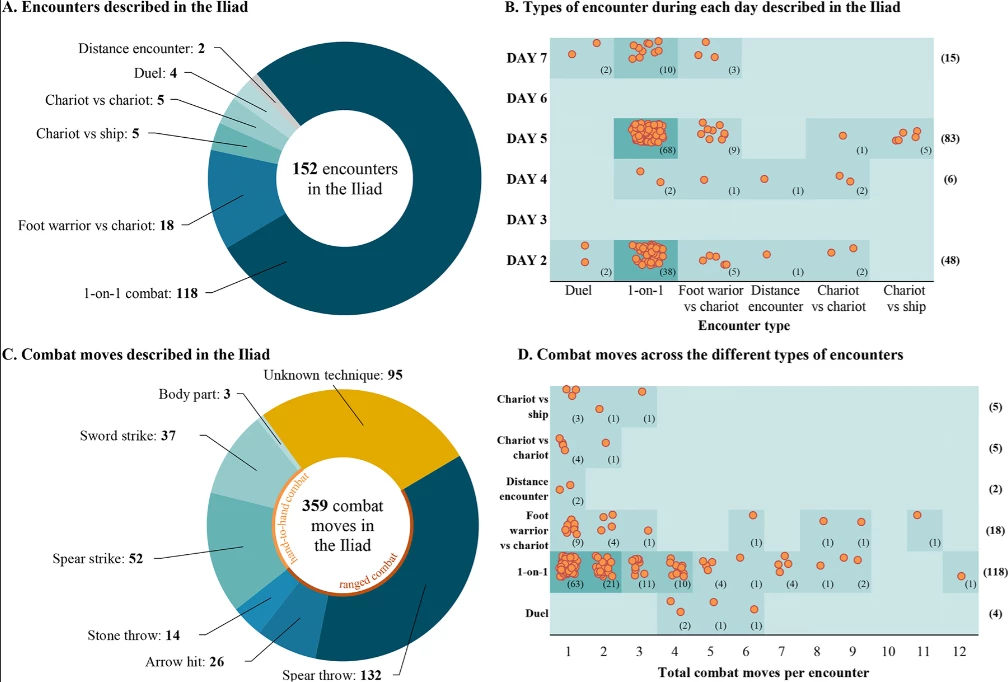An ancient mystery may have been solved after researchers, with the help of 13 Hellenic Marines, proved that a unique 3,500-year-old suit of Greek armor wasn't necessarily just for show, but could have been used for combat at the time of the Trojan War.
In May 1960, the site of a botched tomb robbery near the village of Dendra in Southern Greece sparked a mystery worthy of Indiana Jones. The thieves got away with very little, but their attempted heist uncovered the tomb of a warrior with his belongings stacked in one corner of the funerary chamber.
It's not unusual to find arms and armor in warrior tombs, but this one was off the charts for oddness. Among the deceased's belongings was a suit of armor called a panoply that has no known counterpart in history. It consists of an elaborate bronze cuirass made up of a front and back plate. Hanging from this was a neck guard called a gorget, two shoulder-guards or pauldrons with overlapping plates to protect the arms, and three curved bottom plates or taces back and front to protect the lower trunk.

It was all the product of remarkable workmanship, which is an understatement if ever there was one because there wouldn't be anything similar until the time of France's King Louis XIV over 3,000 years later. In other words, the Dendra Panoply was a classic example of a lost art that died with the Mycenaean Age after the fall of Troy.
Ever since its discovery, the question has remained: what was this armor for? Was it for battle or was it some sort of parade armor only worn for ceremonial occasions?
To find the answer, a team of researchers, some from the University of Thessaly, engaged in a series of four studies that bear a striking resemblance to a research proposal I tried to get off the ground in the 1980s during my archaeologist days. I was curious about ancient and medieval armor and sword combat and I wanted to study them and how they were used from an engineering point of view. Unfortunately, I had to give up the project because it was almost impossible to get my hands on replica swords and other items of sufficient quality without spending a fortune on something that would be highly unlikely to find funding.

Today, you could probably arrange to buy some quite reasonably at the nearest Renaissance Festival.
Forty years too late. Go figure.
The new series of studies involved creating functional copies of the Dendra Panoply, as well as helmets and suitable blunted swords and spears, then kitting out 13 Hellenic Marines selected for their fitness and their ethnic and physical matching of ancient Greek warriors based on historic and archaeological evidence. They were then kitted with biosensors and completed an 11-hour simulation of an ancient Greek combat patrol.

The researchers also recreated the Mycenaean diet for the men (sorry, no caffeine) and ancient Greek fighting techniques based on the writings of the poet Homer in his classic The Iliad, which recounts the battle for the city of Troy. While the team acknowledged that no one knew exactly when the Trojan Wars were fought and that Homer wasn't entirely reliable (he was, after all, blind, writing to entertain, and his works were probably somewhat altered over the centuries), he did provide accounts of ancient warriors that were of a workable level of accuracy.
In addition, the team took into account the climate and terrain of the Trojan Wars and created a digital simulation that would allow them to evaluate combat under a variety of conditions.
What the researchers were looking for was evidence that someone under realistic conditions could carry out sustained combat in the Dendra armor. What they found was that the volunteers could march and fight in hit-and-run maneuvers typical of the time on foot or with chariots with no more stress than a fit man of an average of 29 years could be expected to suffer and that the armor allowed for a practical level of mobility and protection.
Not only that, but the development of such armor in the Late Bronze Age in Europe could explain the rise of ancient Greek culture and influence in the region.
"Our results support the notion that the Mycenaeans had such a powerful impact in the Eastern Mediterranean at least partly as a result of their armor technology," said physiologist and team member Andreas Flouris of the University of Thessaly.
Source: Plos One









